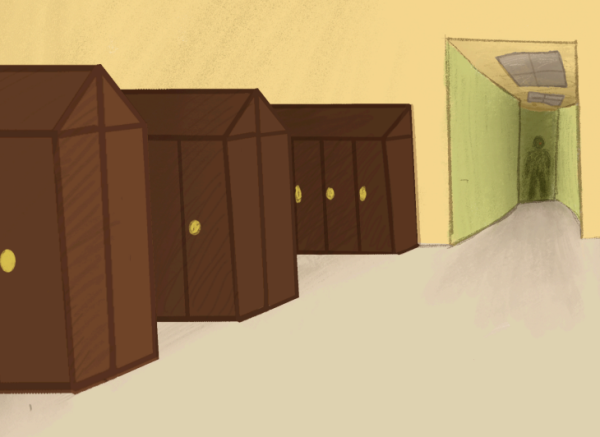Earth’s natural resources rapidly depleting
Green spaces have been proven to be associated with better mental health, but access to green spaces, along with many of Earth’s other natural resources, have decreased significantly in recent years.
It has long been known that our natural resources have been declining. With World Wildlife Day happening on March 3, many are reflecting on the harsh recent changes to the planet.
In November 2022, Earth reached a staggering global population of 8 billion people. It’s no question that the rate at which natural resources are being used has drastically increased since 1750. With the dawn of the industrial revolution, the rate at which people have been using natural resources has exponentially increased and our insatiable desire for more raw materials seems to be never-ending.
Many factors have contributed to the depletion of our natural resources worldwide, including but not limited to overpopulation, waste, overconsumption, deforestation, the loss of ecosystems, mining, urbanization, and pollution.
Out of the many resources that are in decline, water is only one of them. Only 2.5 percent of all water is freshwater, which is typically found in ice or glaciers. Even though water is a renewable resource, it is being used up quickly. According to The Food and Agriculture Organization of the United Nations, 1.8 billion people will have no water to drink by the year 2025.
In addition, coal is one of the most used resources and is the most used fossil fuel. According to the World Bank, fossil fuels provide for about sixty-six percent of the world’s energy. In about 150 years, our known coal deposits could be depleted and gone. Other fossil fuels that are in high demand include oil and natural gas. Oil is expected to run out in the next thirty years based on our current world demands, and natural gas is estimated to run out by the year 2060.
Biodiversity loss puts at risk the planet’s food and water supplies, as well as the extinction of animal species around the globe. Researchers have estimated that over a million species of plants and animals are threatened with extinction over the next couple of decades.
“I think that we as humans ignore the fact that the Earth is dying and sometimes forget about it, so our environment just continues to worsen,” Tenzin Tsering (12) said. “And most of us still don’t know what [or how] to recycle and what not to, which [I think] is also the reason why the Earth and the animals living on our planet are dying.”
To protect against biodiversity loss, almost 190 countries signed The Paris Agreement, a deal that would protect 30 percent of the world’s land and seas by 2030. As of today, about eight percent of the planet’s oceans and 17 percent of the planet’s land are protected. The part of the deal and the plan known as 30×30 is planned to protect 30 percent of the Earth’s land and seas.
“Our planet is so huge compared to us,” Columbia Heights High School Science teacher Ms. Aimee Candella said. “Until the 19th-century timber famine, we had never even thought about conservation or limits. Other [Indigenous] cultures who lived here knew that care was needed. European settlers just didn’t have that mentality.”
Still today, this decline of natural resources is slower on indigenous lands, which make up approximately 25-30% of U.S. land, than on private or government-owned land. Their crops are more species-rich than non-indigenous ones, promoting higher rates of biodiversity, and their consumption is far more sustainable too.
“Our only chance is if we start reducing our consumption,” Candella said. “Either we choose to stop or the choice will be made for us.”
Some other things the average person can do to protect the earth’s natural resources include conserving electricity and unplugging and turning things off when we are not using them. Buying energy-efficient light bulbs and appliances can also help.
Using reusable bags and bottles can be beneficial to reducing the amount of plastic waste that can end up in the wrong place and harm the environment, a problem that has increased by over 200% over the past 20 years. And of the materials that are attempted to be recycled, only 9% are actually being turned into new materials, proving that reuse rather than recycling is a more reliable form of environmental protection.
Another way of protecting the environment is to drive less or drive a more fuel-efficient car. Living in a more walkable city is also better for the environment. More and more are taking the bus, carpooling, biking, or even walking as opposed to commuting individually by car.
Reducing overall consumption and use of electricity, reducing food waste, planting trees, using public transportation and raising awareness about this issue are some of the best methods we can use to save our planet.

Tenzin Sonam is a senior at Columbia Heights High School. She is the 2022-2023 News Editor for the Heights Herald. Outside of school, she enjoys listening...

My name is Istabraq Sheikh and I'm a 11th grader at CHHS. It's my second year in the Heights Herald. I joined because I enjoy writing and wanted to...







